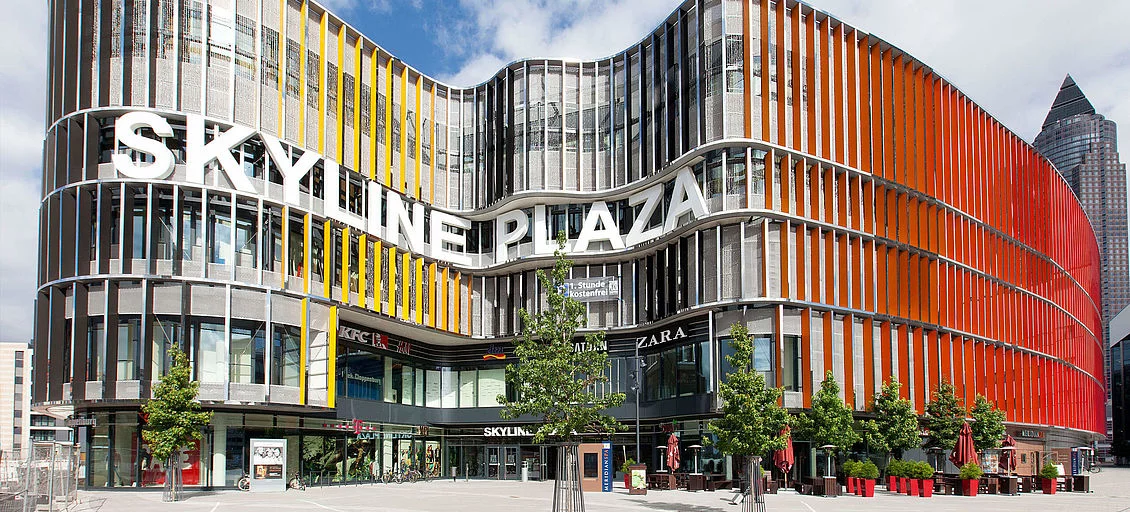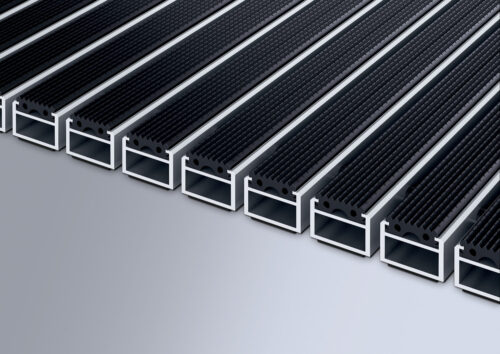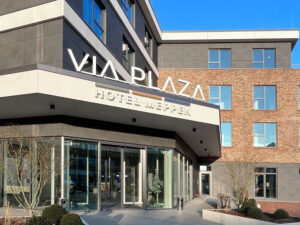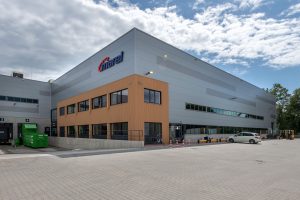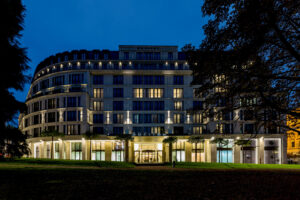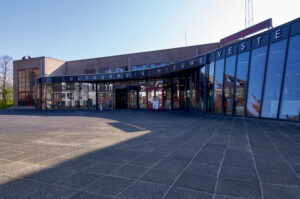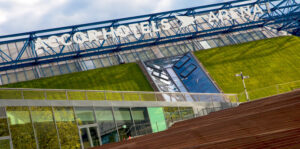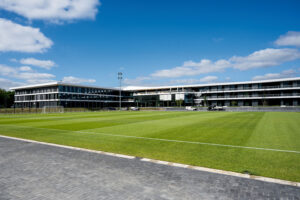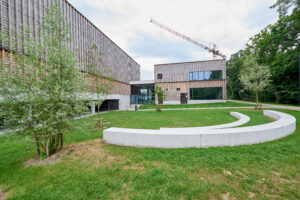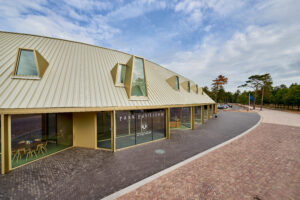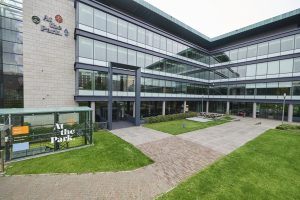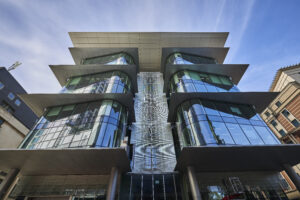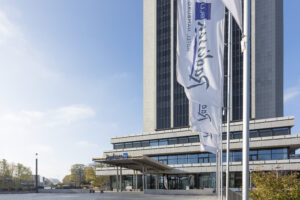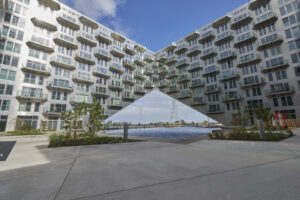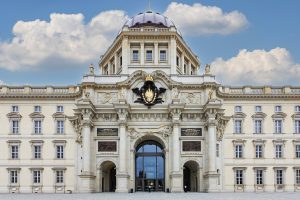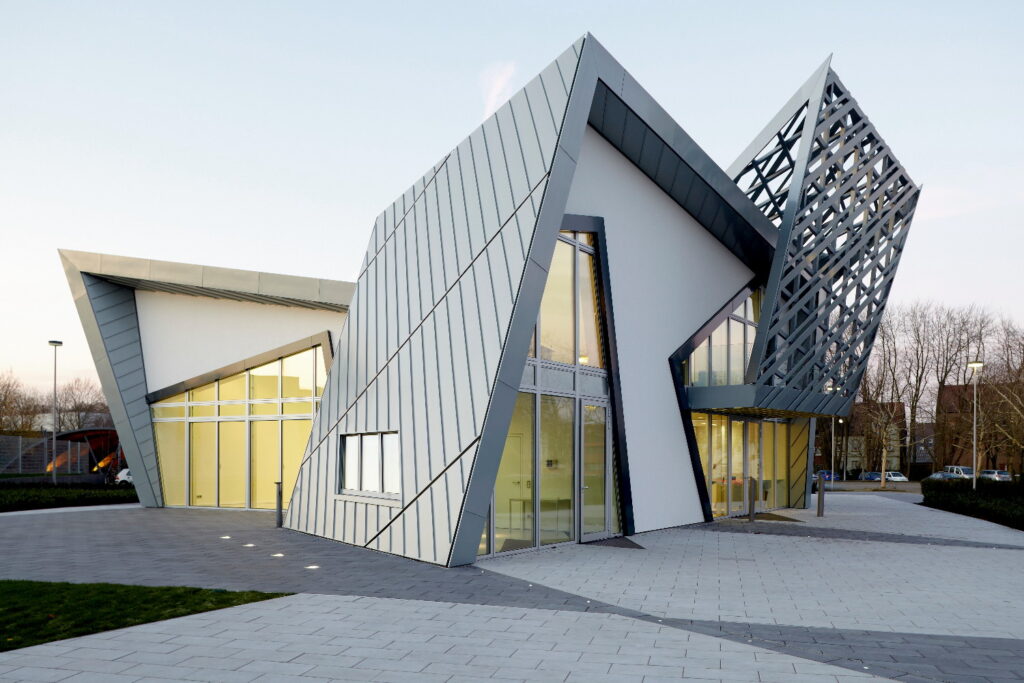
Design details combine design and function
The white-grey building with its dynamic lines unmistakably bears the signature of its architect: the renowned New York architect Daniel Libeskind. Yet its size and use are astonishing. Designed as a prototype for exclusive living, it serves the Rheinzink company as a reception, event and exhibition building. But that is not the only remarkable thing
Modern living in dialogue with extraordinary spaces
At the beginning of the design process, Daniel Libeskind asked himself how he wanted to live. The result of this debate is a residential building in the tradition of a Roman villa – translated into contemporary architecture.
Characteristic of the construction, consisting of three nested structures with floor areas of 120, 90 and 60 square metres, is a multitude of acute and obtuse angles. The viewer’s gaze falls on a dynamic structure of different lines as well as numerous triangular and trapezoidal shapes and the resulting interaction of light and shadow. This overall impression is reinforced by the façade, which is predominantly made of titanium zinc, as well as by the partially sloping walls and generously dimensioned window areas. Inside, the crystalline form creates very different spatial qualities – from impressive, two-storey rooms to gentle transitions and private levels.
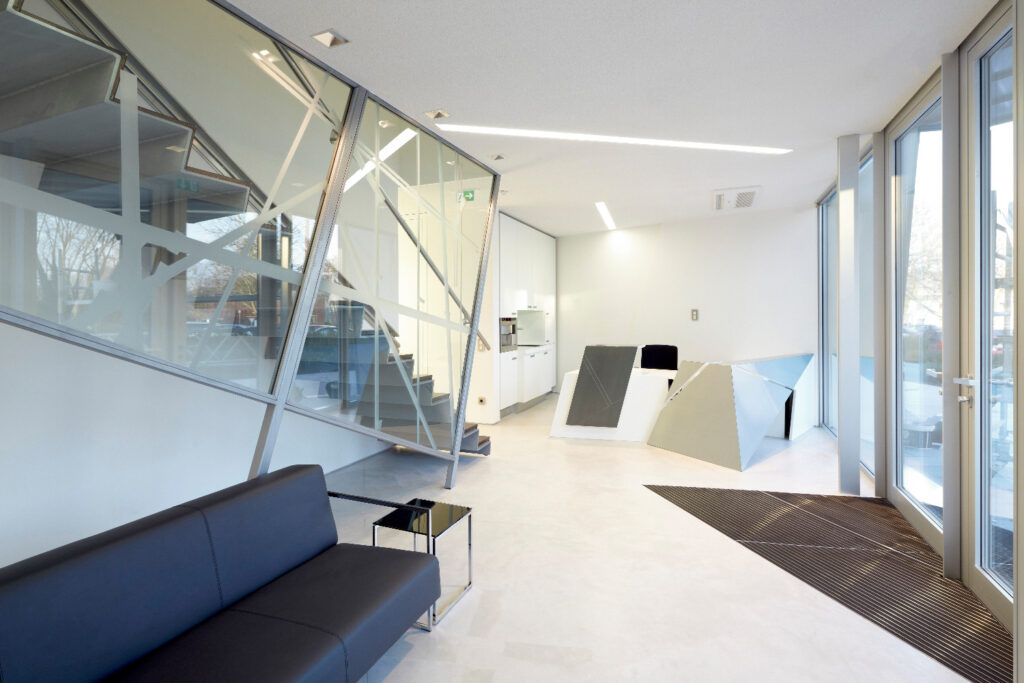
Exclusive architecture implemented sustainably
In addition to its architectural extravagance, the so-called Libeskind Villa is also characterised by a sustainable construction method in timber frame construction, the use of high-quality materials and materials as well as an environmentally conscious energy concept. “The building is proof that extraordinary architecture and sustainable construction can form a unity without any compromises,” explains Hans-Jürgen Klugstedt, who supervised the property for the client as project manager. “In addition, it was crucial for the realisation of the overall concept that each individual element optimally combines aesthetics and functionality.”
“The entrance mats fit perfectly into the overall concept – on the one hand through the required combination of aesthetics and functionality and on the other hand through their sustainability aspect. Because less dirt means less effort, water and chemicals for cleaning.”
Thomas Bühlmeyer,
Project manager RHEINZINK
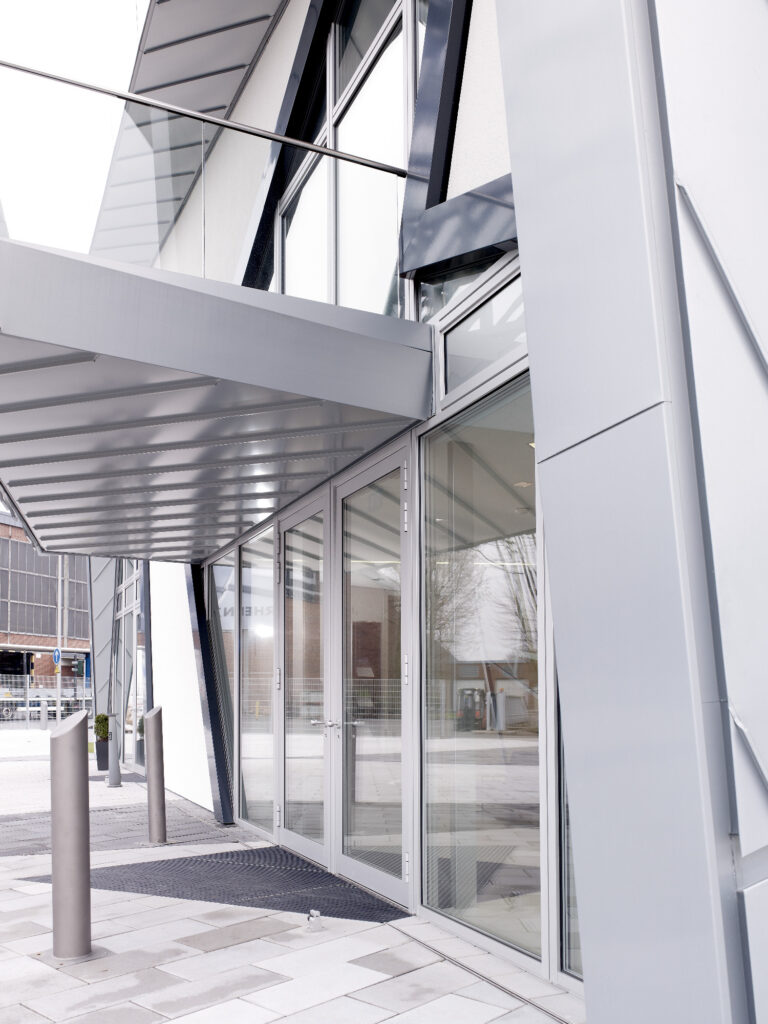
Impressive architecture, cleanly designed
Consequently, these requirements also had to be met by the cleanliness systems intended for the impressive entrance areas. “On the one hand, it was very important to us that the solution chosen here also reflects Libeskind’s specific architectural language,” Klugstedt describes the selection criteria. “Furthermore, the clean run system should of course be particularly effective in absorbing dirt in order to ensure an inviting reception ambience and at the same time protect the chosen floor in the entrance hall.” With this in mind, those responsible opted for the high-quality entrance mats from the manufacturer Emco Bau. In terms of function and design, they are precisely tailored to the requirements of the respective building. Manufactured in a trapezoidal special design, the entrance mats fit harmoniously into the dynamic geometry of the overall building. The detailed specifications of the star architect also included that the joints incorporated as eye-catchers in the floor covering of the ground floor should be projected onto the clean-running system and visually continued there.
continued there. For this, it was first necessary to precisely record the angle of incidence of the individual joints so that they could then be transferred to the entrance mat with the help of T-shaped stainless steel profiles. Thanks to the expert support of Emco Bau, this was extremely successful.
